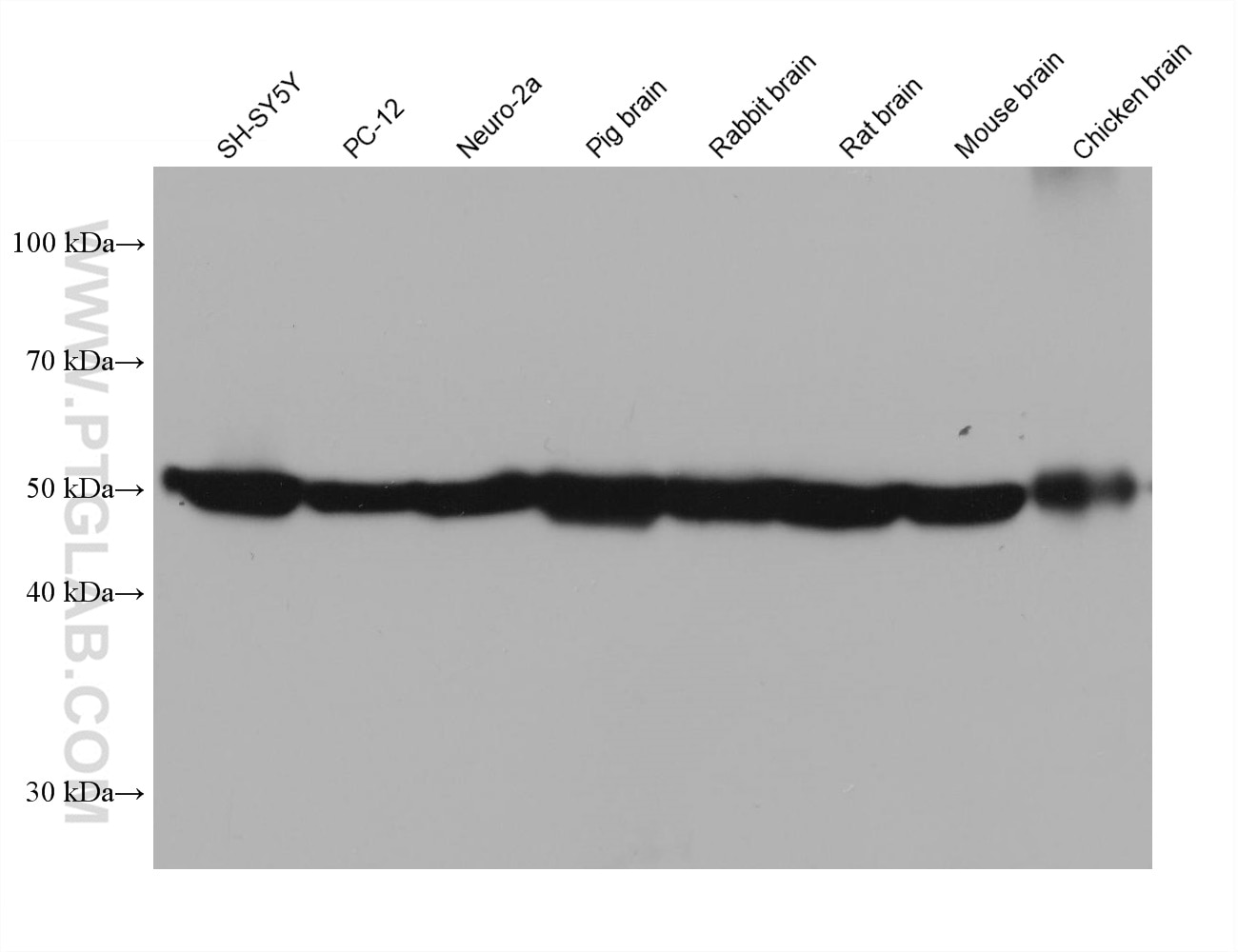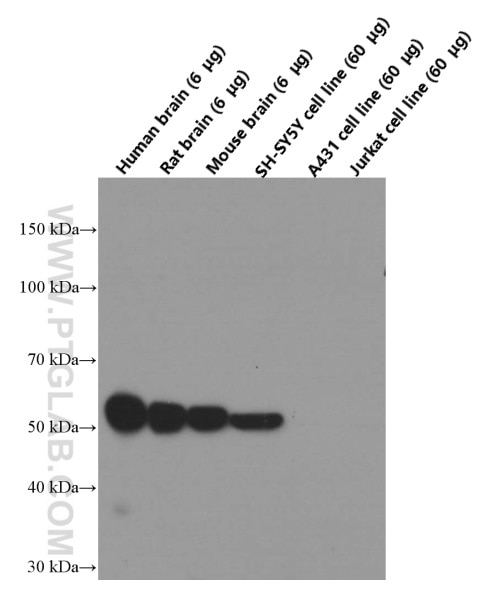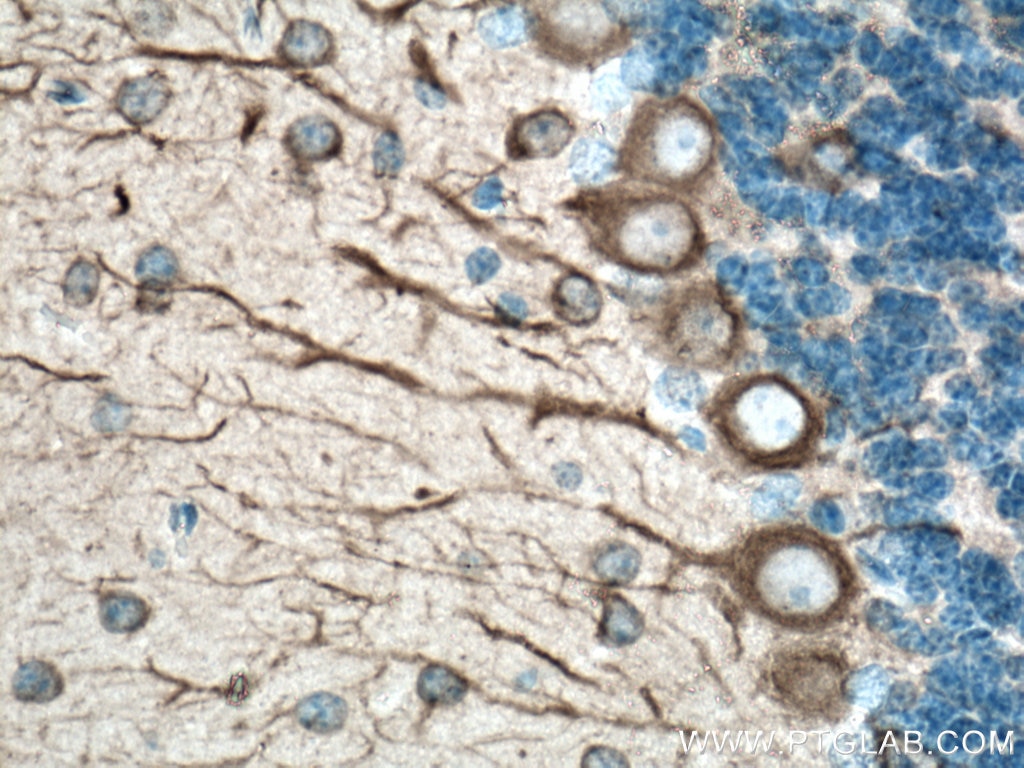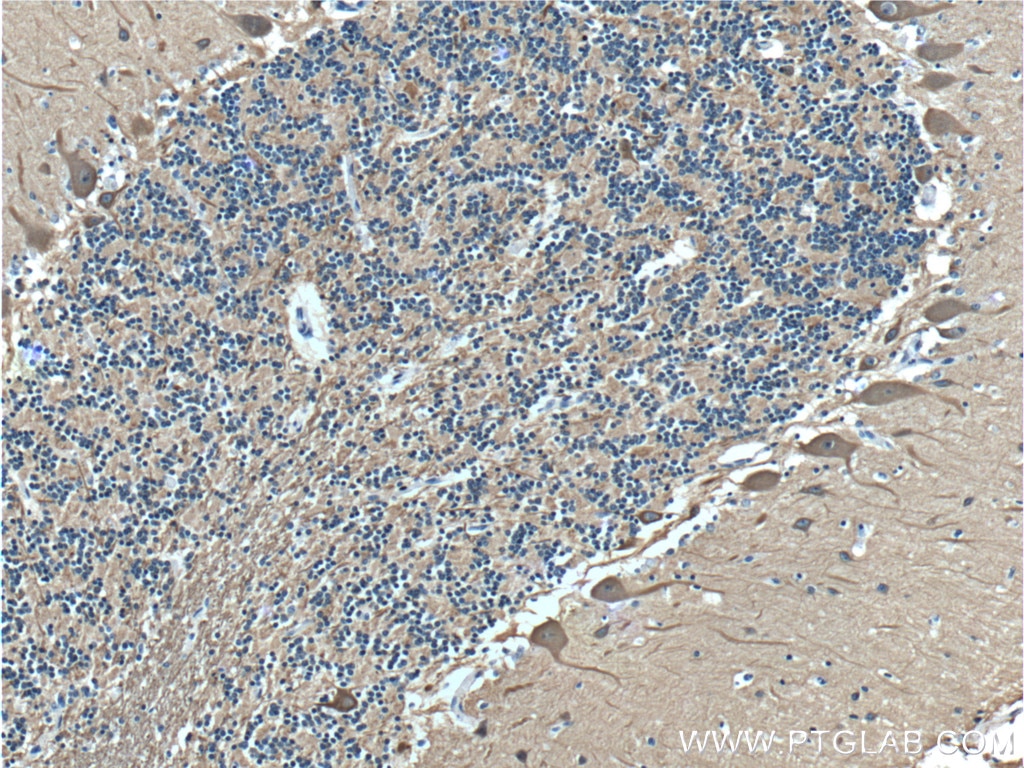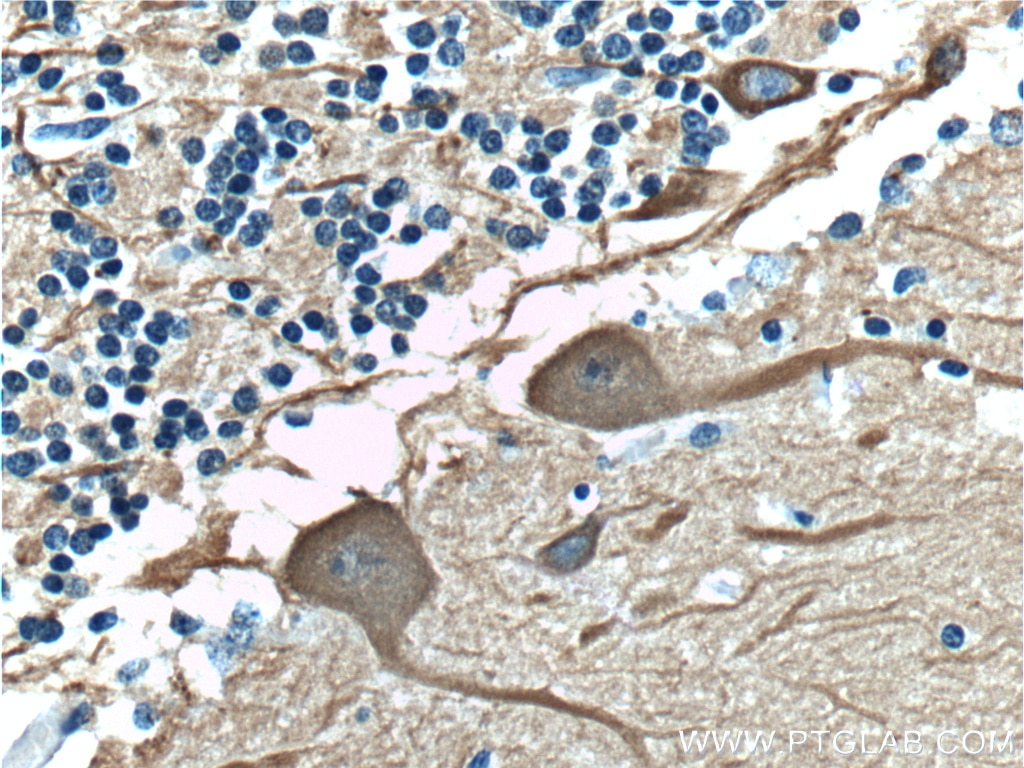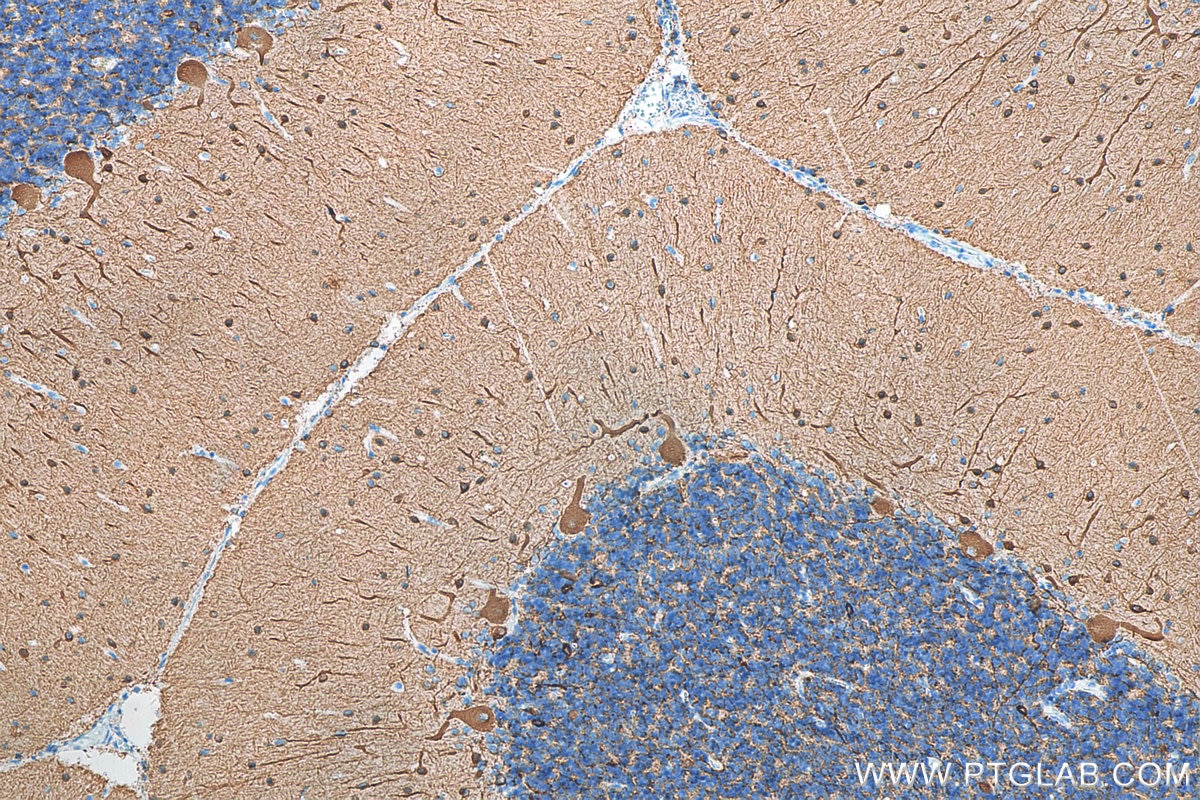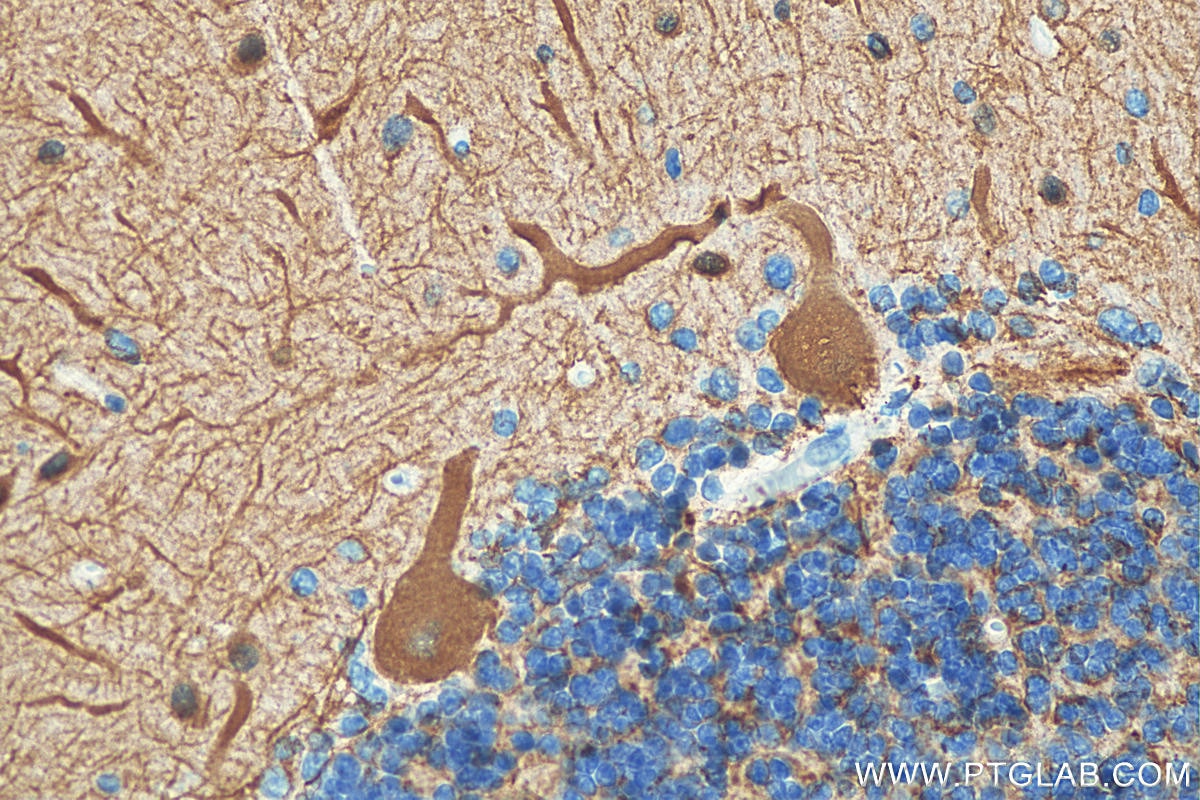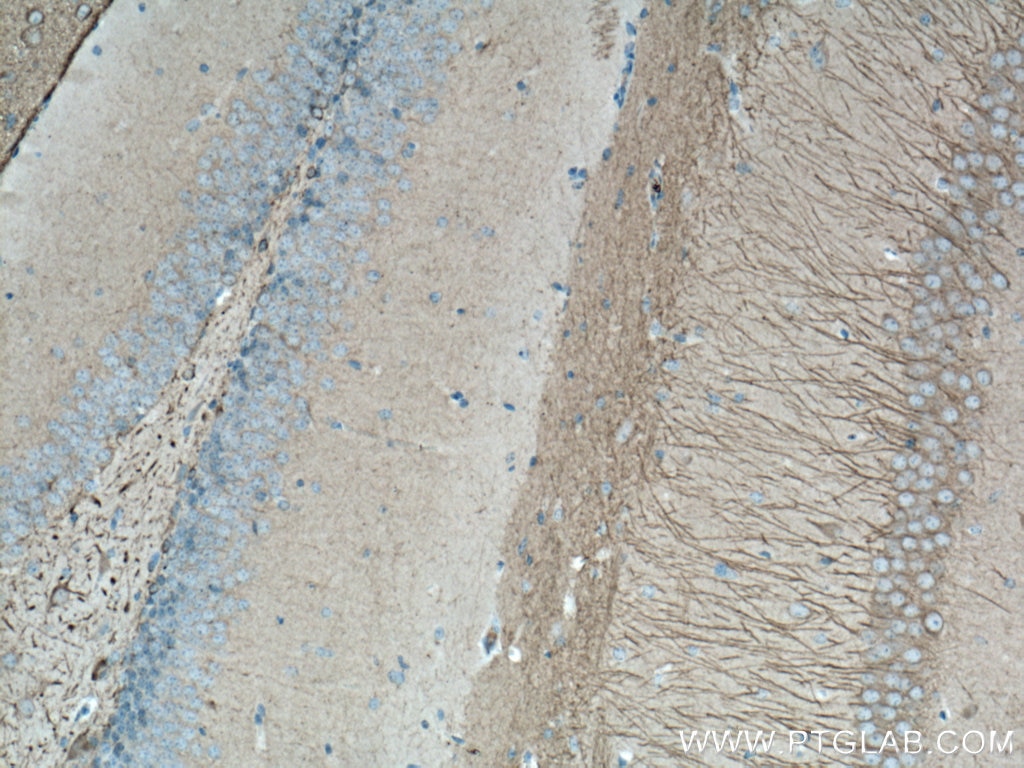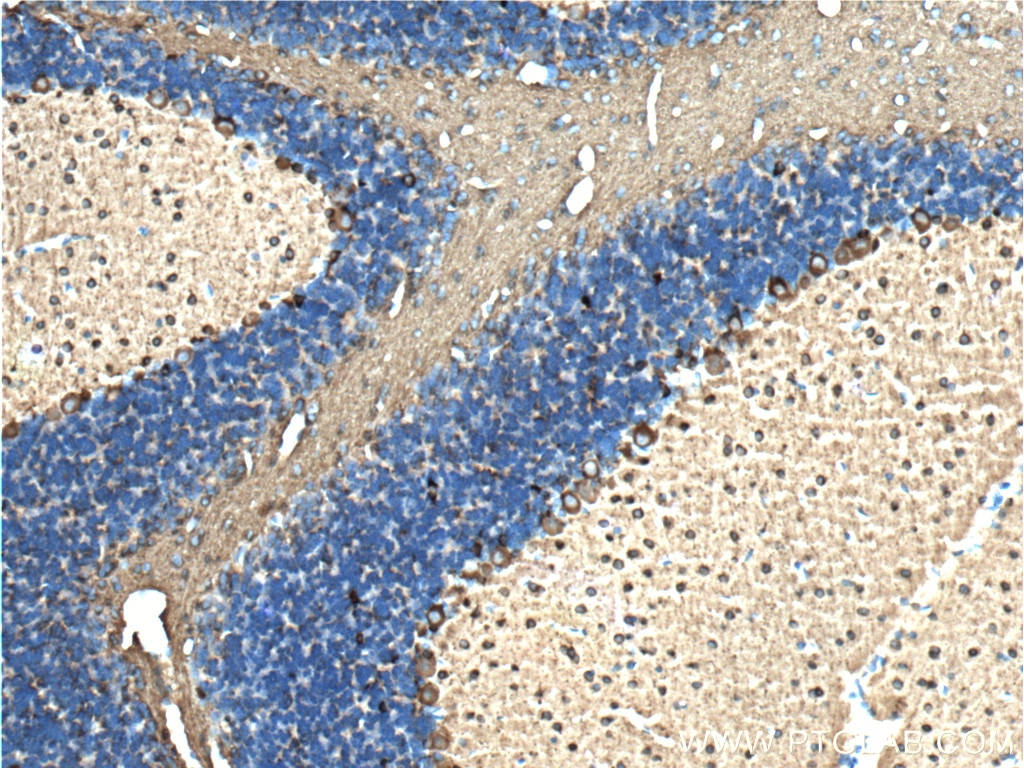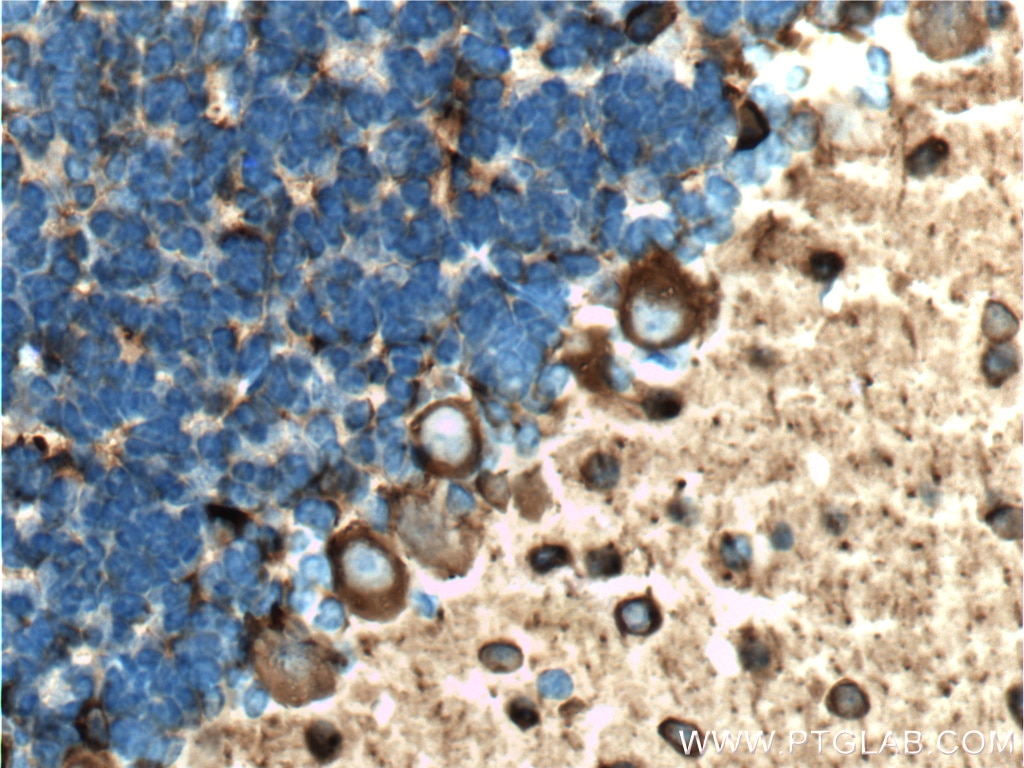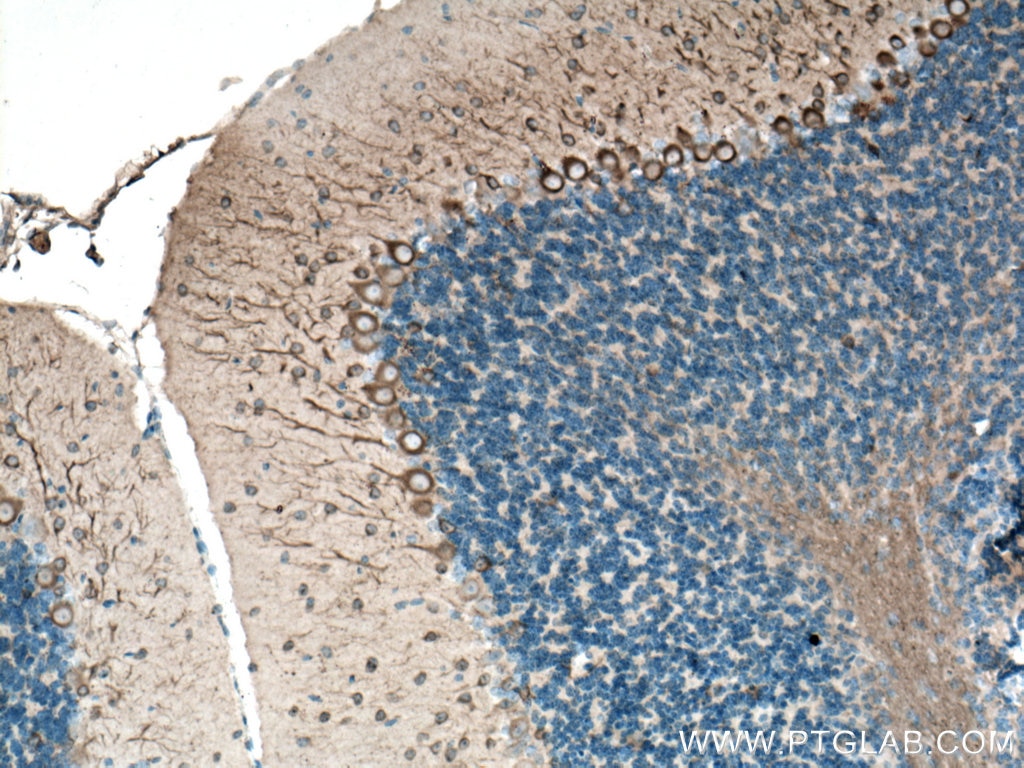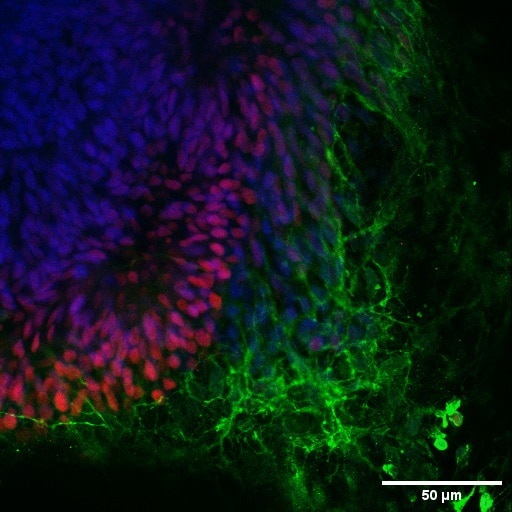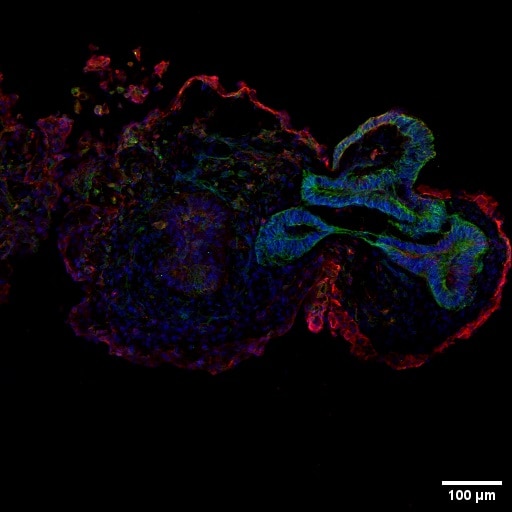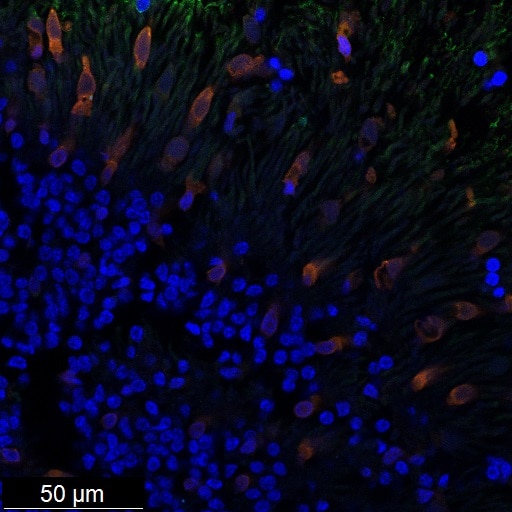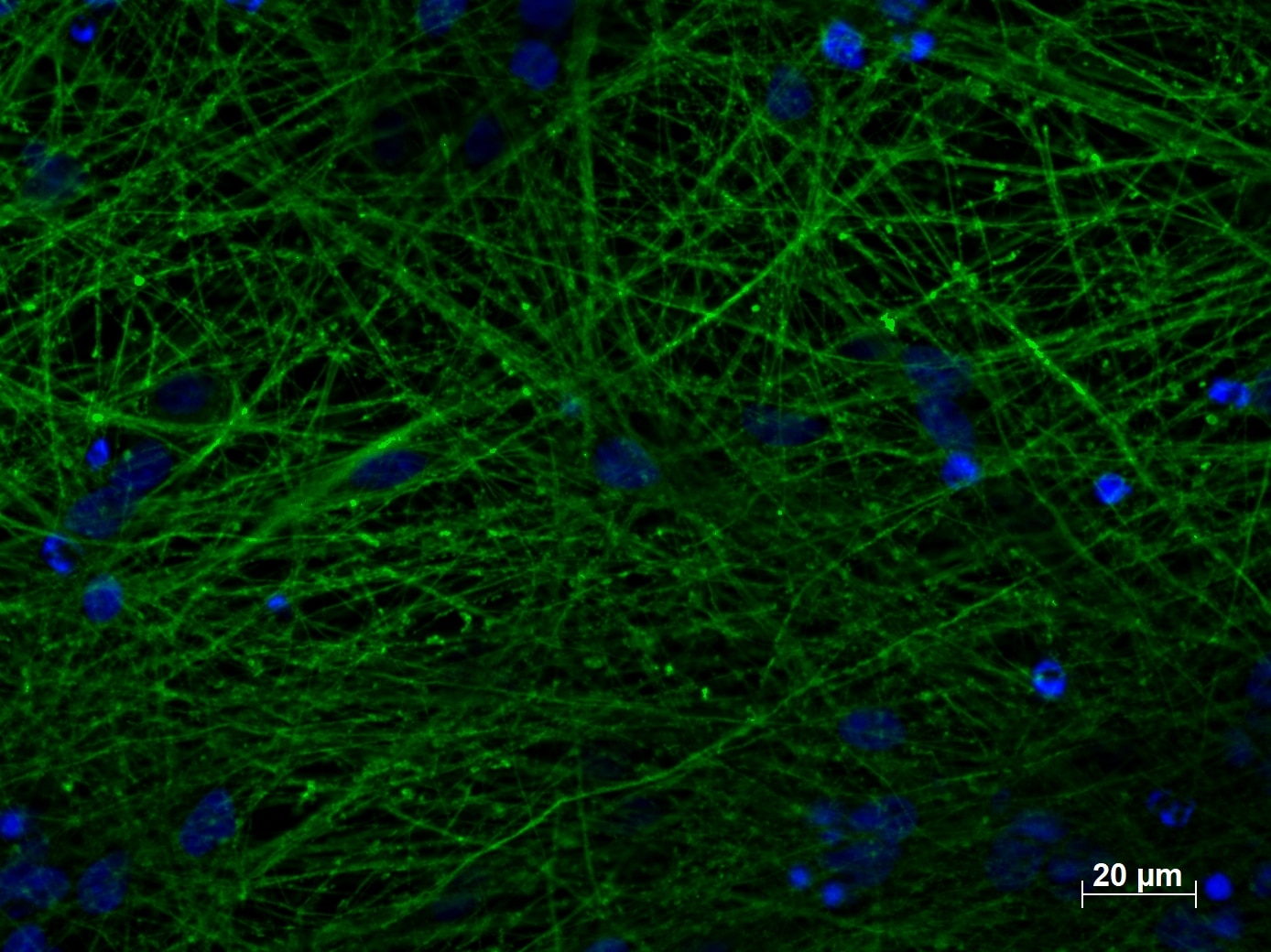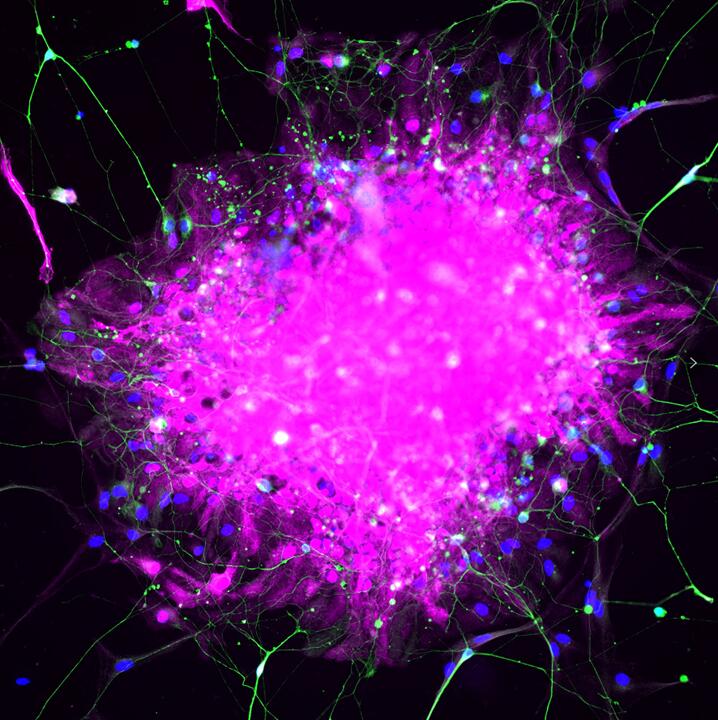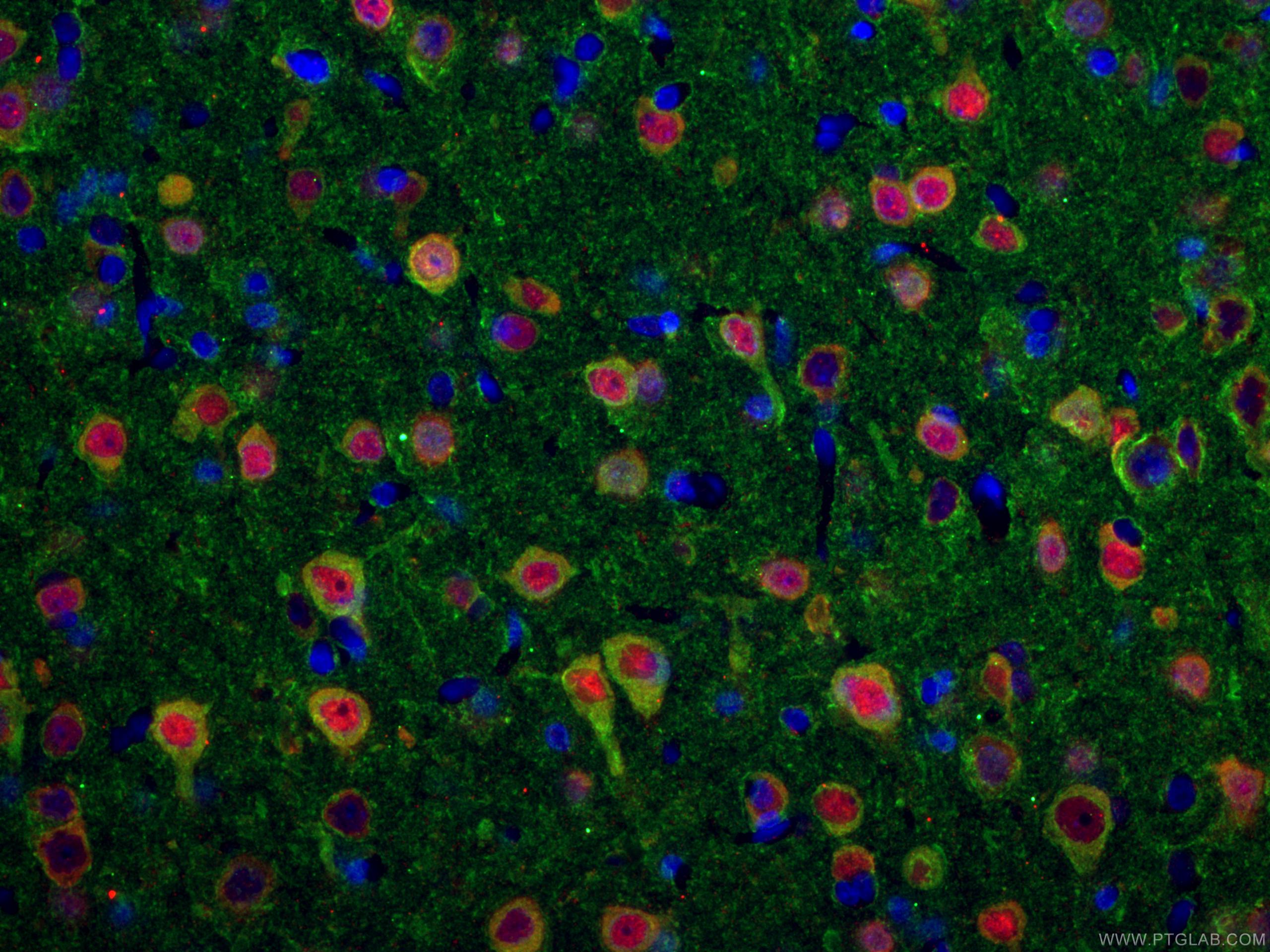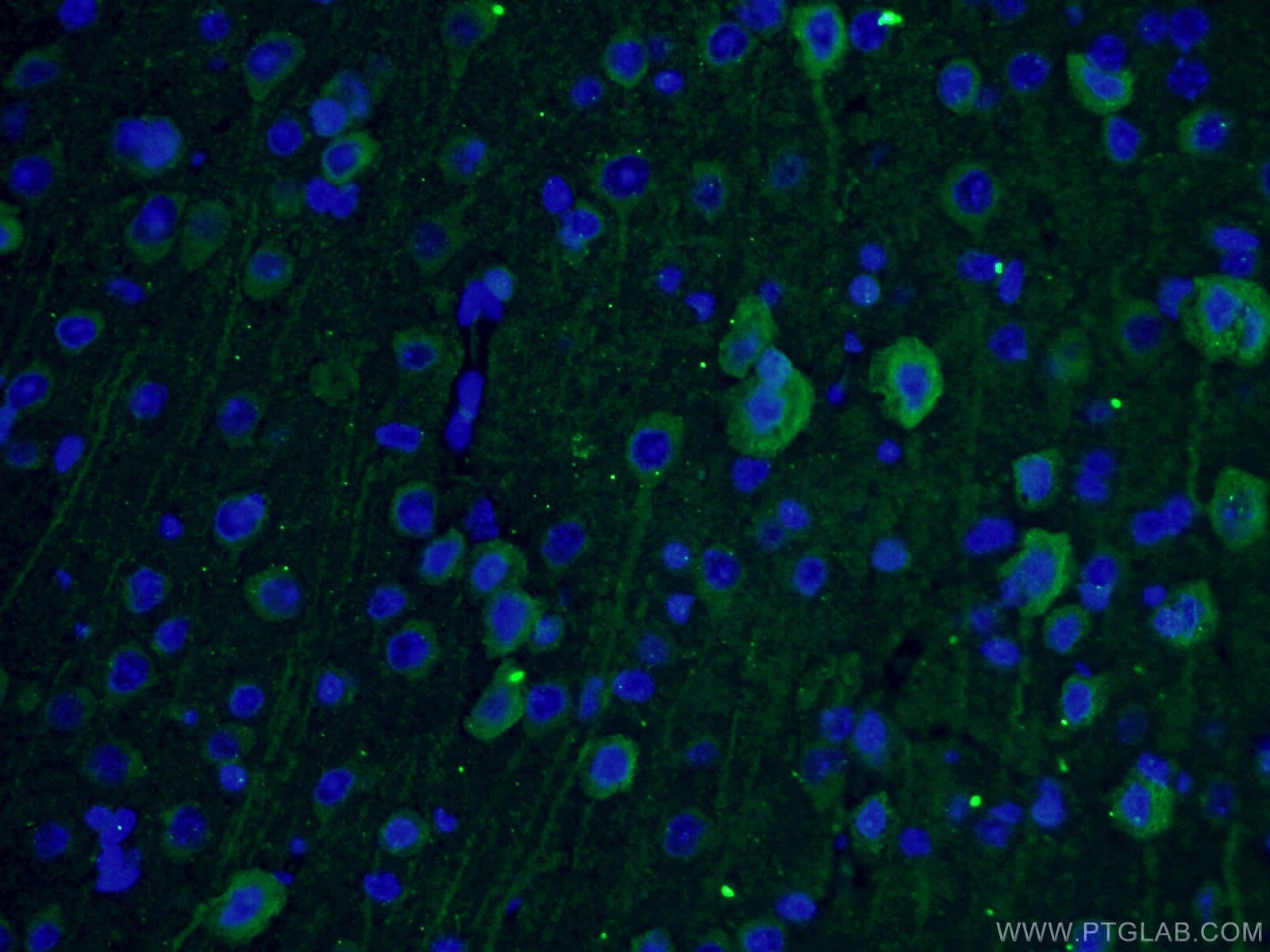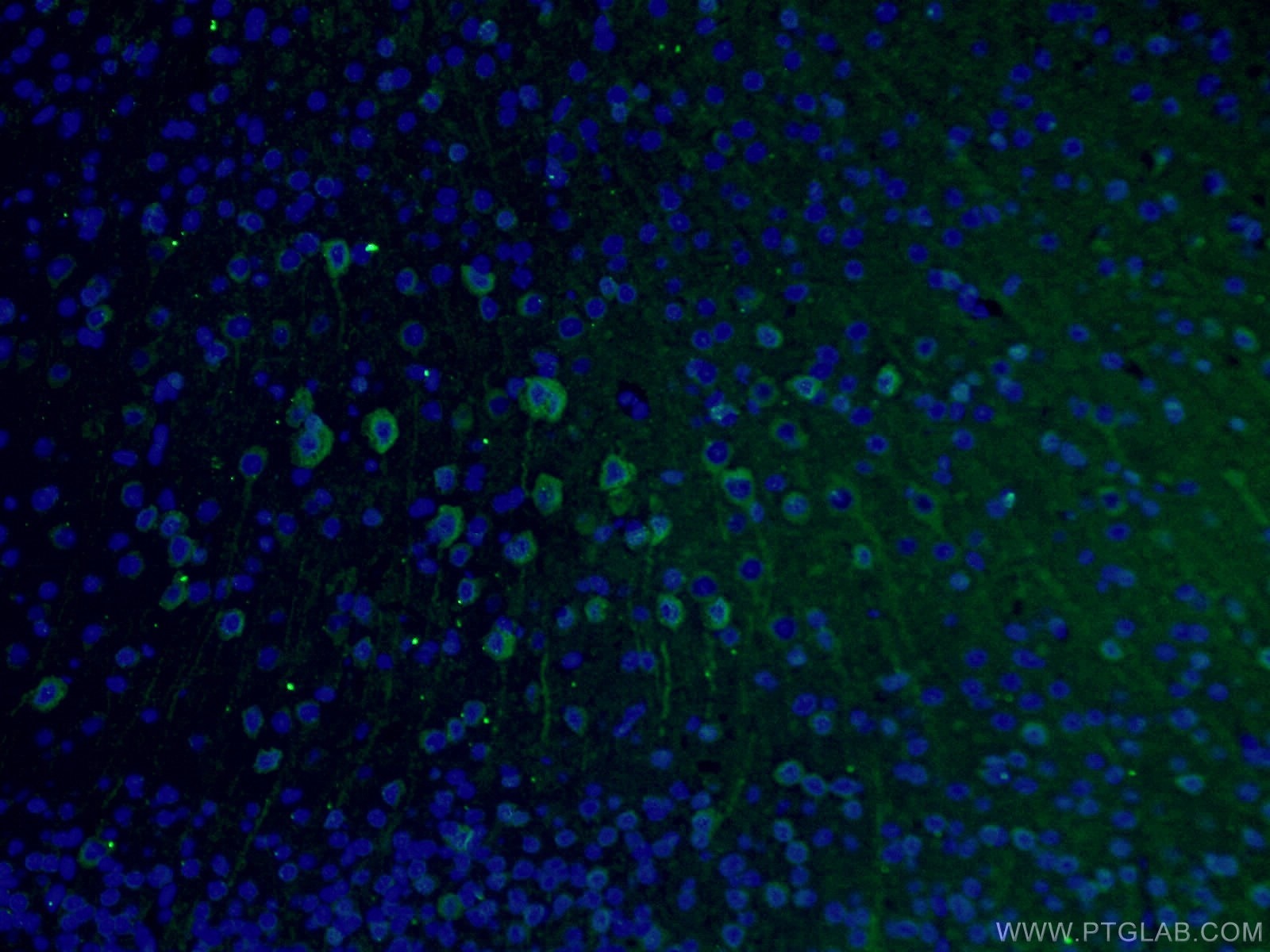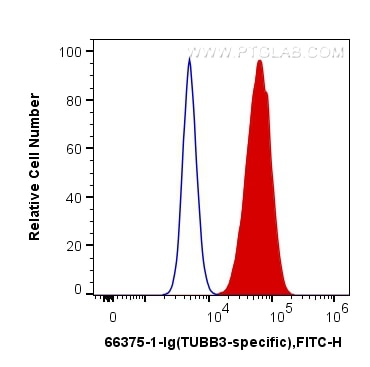Anticorps Monoclonal anti-TUBB3-specific/TUJ1
TUBB3-specific/TUJ1 Monoclonal Antibody for FC, IF, IHC, WB, ELISA
Hôte / Isotype
Mouse / IgG1
Réactivité testée
Humain, Lapin, porc, poulet, rat, souris
Applications
WB, IHC, IF, FC, ELISA
Conjugaison
Non conjugué
CloneNo.
1F8G10
N° de cat : 66375-1-Ig
Synonymes
Galerie de données de validation
Applications testées
| Résultats positifs en WB | cellules SH-SY5Y, cellules Neuro-2a, cellules PC-12, cerveau de lapin, cerveau de porc, cerveau de poulet, tissu cérébral humain |
| Résultats positifs en IHC | tissu de cervelet humain, tissu cérébral de souris, tissu de cervelet de souris il est suggéré de démasquer l'antigène avec un tampon de TE buffer pH 9.0; (*) À défaut, 'le démasquage de l'antigène peut être 'effectué avec un tampon citrate pH 6,0. |
| Résultats positifs en IF | tissu cérébral de rat, cellules iPS, tissu cérébral de souris |
| Résultats positifs en cytométrie | cellules SH-SY5Y |
Dilution recommandée
| Application | Dilution |
|---|---|
| Western Blot (WB) | WB : 1:5000-1:50000 |
| Immunohistochimie (IHC) | IHC : 1:400-1:20000 |
| Immunofluorescence (IF) | IF : 1:50-1:500 |
| Flow Cytometry (FC) | FC : 0.20 ug per 10^6 cells in a 100 µl suspension |
| It is recommended that this reagent should be titrated in each testing system to obtain optimal results. | |
| Sample-dependent, check data in validation data gallery | |
Applications publiées
| WB | See 14 publications below |
| IHC | See 2 publications below |
| IF | See 33 publications below |
| FC | See 2 publications below |
Informations sur le produit
66375-1-Ig cible TUBB3-specific/TUJ1 dans les applications de WB, IHC, IF, FC, ELISA et montre une réactivité avec des échantillons Humain, Lapin, porc, poulet, rat, souris
| Réactivité | Humain, Lapin, porc, poulet, rat, souris |
| Réactivité citée | rat, Humain, poulet, souris |
| Hôte / Isotype | Mouse / IgG1 |
| Clonalité | Monoclonal |
| Type | Anticorps |
| Immunogène | Peptide |
| Nom complet | tubulin, beta 3 |
| Masse moléculaire calculée | 55 kDa |
| Poids moléculaire observé | 50-55 kDa |
| Numéro d’acquisition GenBank | NM_001197181 |
| Symbole du gène | TUBB3 |
| Identification du gène (NCBI) | 10381 |
| Conjugaison | Non conjugué |
| Forme | Liquide |
| Méthode de purification | Purification par protéine G |
| Tampon de stockage | PBS avec azoture de sodium à 0,02 % et glycérol à 50 % pH 7,3 |
| Conditions de stockage | Stocker à -20°C. Stable pendant un an après l'expédition. L'aliquotage n'est pas nécessaire pour le stockage à -20oC Les 20ul contiennent 0,1% de BSA. |
Informations générales
TUBB3, the class III β tubulin or Tuj1, is selectively expressed in testis and neurons of the central and peripheral nervous system. It has been widely used as a marker for neurons. Aberrant expression of TUBB3 has also been found in various tumors of non-neural origin and can be used as a biomarker for cancer aggressiveness and a marker for the tendency to respond poorly to chemotherapy. This antibody is specific to TUBB3 but not cross-react with other tubulin isoforms.
Protocole
| Product Specific Protocols | |
|---|---|
| WB protocol for TUBB3-specific/TUJ1 antibody 66375-1-Ig | Download protocol |
| IHC protocol for TUBB3-specific/TUJ1 antibody 66375-1-Ig | Download protocol |
| IF protocol for TUBB3-specific/TUJ1 antibody 66375-1-Ig | Download protocol |
| Standard Protocols | |
|---|---|
| Click here to view our Standard Protocols |
Publications
| Species | Application | Title |
|---|---|---|
Neuron Posterior Neocortex-Specific Regulation of Neuronal Migration by CEP85L Identifies Maternal Centriole-Dependent Activation of CDK5. | ||
Sci Total Environ Ambient NO2 exposure induces migraine in rats: Evidence, mechanisms and interventions. | ||
Curr Biol Pyramidal neuron morphogenesis requires a septin network that stabilizes filopodia and suppresses lamellipodia during neurite initiation | ||
Cell Rep NLRP14 deficiency causes female infertility with oocyte maturation defects and early embryonic arrest by impairing cytoplasmic UHRF1 abundance | ||
Theranostics Chlorogenic acid effectively treats cancers through induction of cancer cell differentiation. | ||
Carbohydr Polym Silk fibroin nanofibrous scaffolds incorporated with microRNA-222 loaded chitosan nanoparticles for enhanced neuronal differentiation of neural stem cells. |
Avis
The reviews below have been submitted by verified Proteintech customers who received an incentive forproviding their feedback.
FH Gabriele (Verified Customer) (01-12-2023) | The antibody works very well with our IF protocol. Maybe the dilution could be pushed to 1:500-1:600. TUBB3 1:400 (green), Hoechst (Blue)
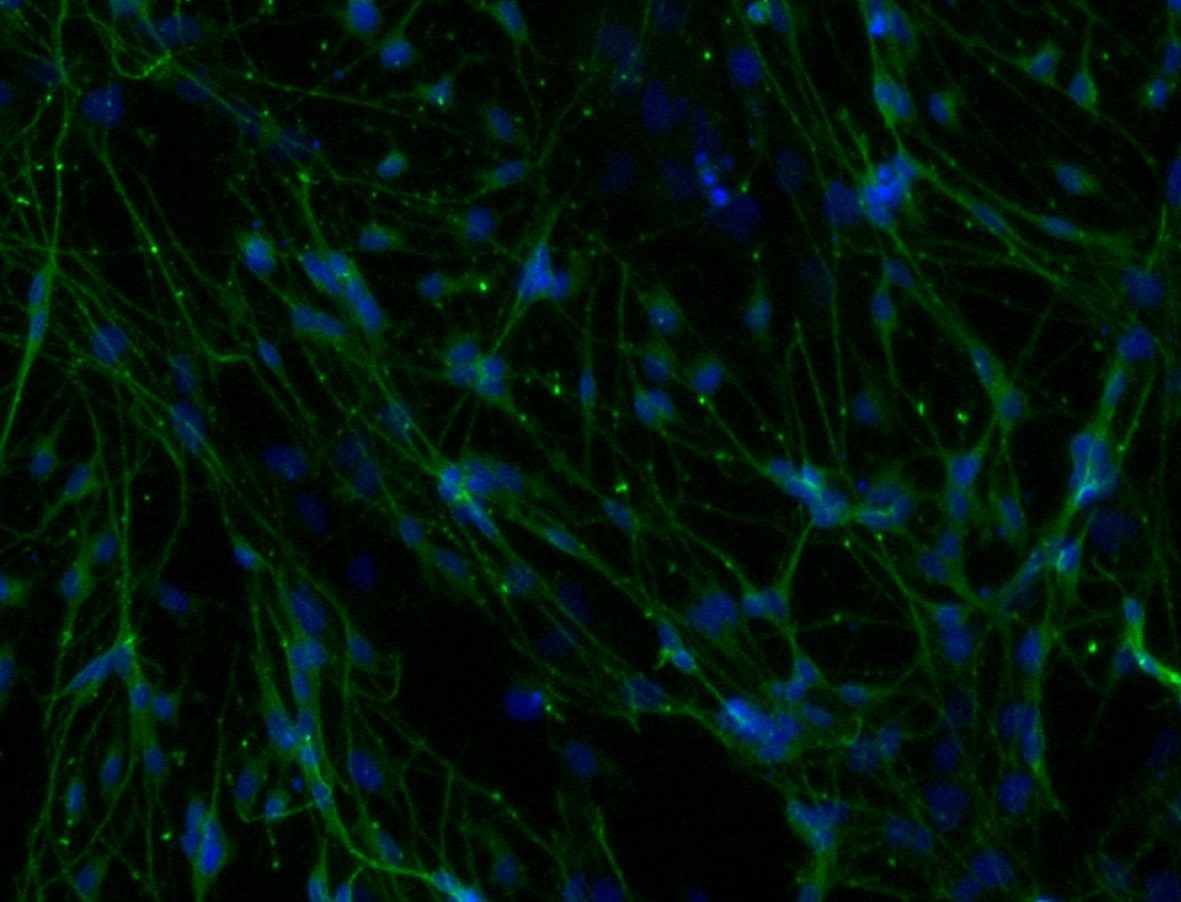 |
FH Alessandro (Verified Customer) (07-27-2022) | No aspecific staining, great outcome
|
FH Josh (Verified Customer) (12-18-2018) | BIII tubulin antibody signal nicely fills neuronal cell bodies and processes with good signal to noise at a reasonable dilution (1:500 in 1% NDS, 0.3% Triton-X, PBS with donkey anti-mouse 647 secondary, 1:500). However, BIII tubulin antibody signal also colocalized with S100 immunoreactive astrocytic processes, though with a lesser intensity. Overall, the antibody is a useful marker of neuronal differentiation when used in combination with other cell-selective antibodies and morphology. Image caption: Differentiated adult hippocampal neural stem cell culture. BIII tubulin 1:500 (purple), S100 1:500 (red), Hoechst (blue). Scale bar = 20 um.
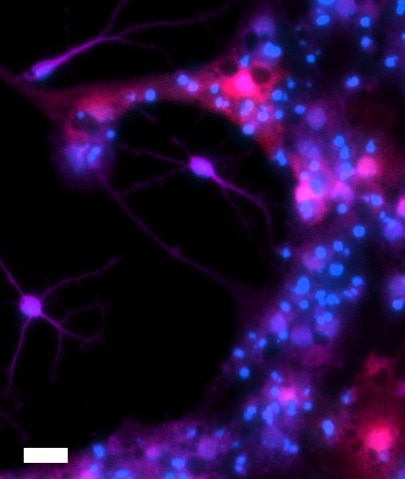 |
